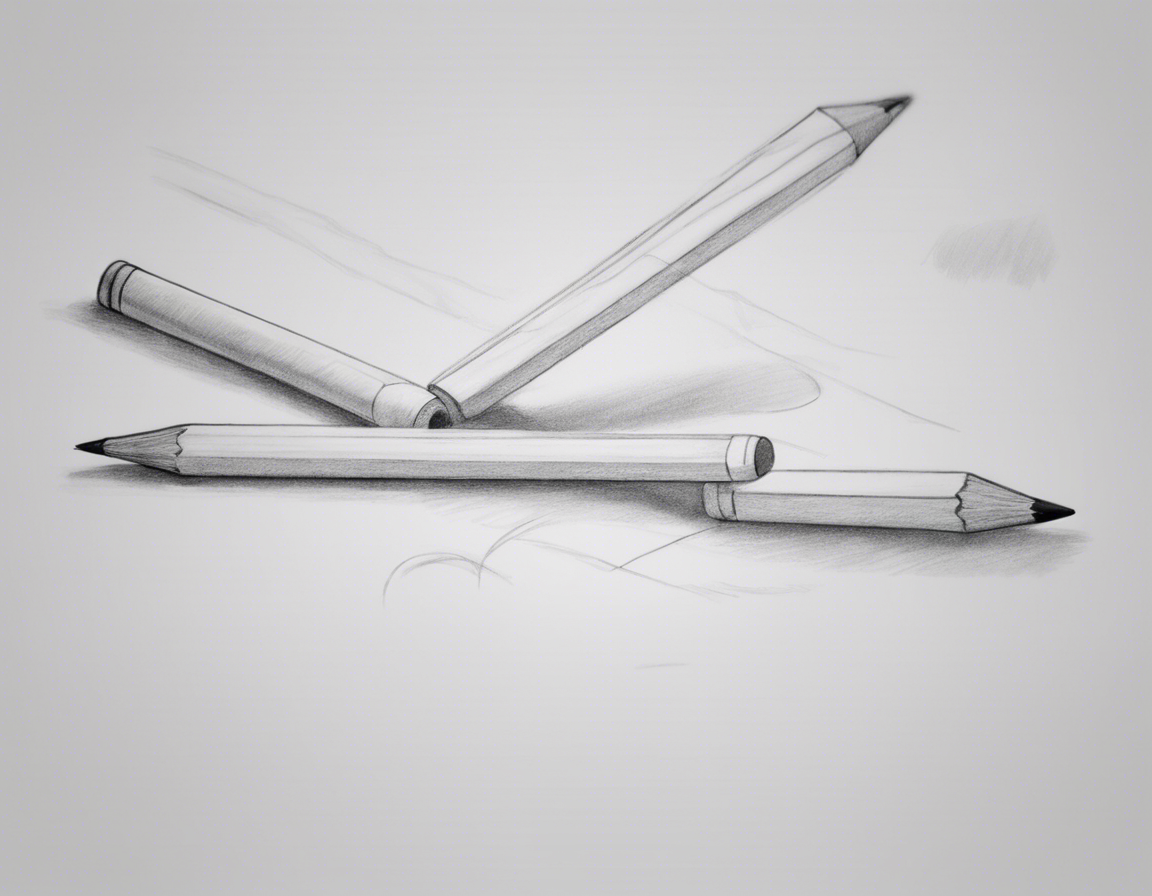Are you eager to elevate your drawing skills and truly master the art of using a pencil? Whether you are a beginner artist looking to improve your tec
Are you eager to elevate your drawing skills and truly master the art of using a pencil? Whether you are a beginner artist looking to improve your techniques or an experienced one seeking to refine your craft, this comprehensive guide will walk you through the step-by-step process of creating stunning pencil drawings.
Understanding Your Tools
Before diving into the actual drawing process, it is crucial to understand the tools you will be working with. Pencils come in various grades, ranging from 9H (hardest) to 9B (softest). The H stands for hard and produces lighter marks, while the B stands for soft and creates darker tones. By experimenting with different pencils, you can achieve a wide range of values in your drawings.
Setting Up Your Workspace
Creating a comfortable and organized workspace is essential for a productive drawing session. Ensure that your lighting is adequate to avoid shadows on your paper. Have all your materials within reach, including pencils of various grades, erasers, sharpeners, and blending tools.
Choosing the Right Paper
The type of paper you use can significantly impact the outcome of your drawing. Drawing paper with a heavier weight and a finer texture is ideal for pencil drawings as it can withstand multiple layers of graphite and allows for better blending. Experiment with different types of paper to find one that suits your style.
Basic Drawing Techniques
1. Sketching
Begin by lightly sketching the basic shapes and outlines of your subject. Use short, light strokes to build your drawing gradually without committing to any specific lines.
2. Shading
Shading is essential for creating depth and dimension in your drawings. Start by identifying the light source in your composition and shade accordingly. Use a combination of hatching (parallel lines), cross-hatching (intersecting lines), and smudging to achieve various textures and values.
3. Blending
Blending is a technique used to smooth out harsh lines and transitions in your drawings. You can use a blending stump, a tortillon, or even your fingers to blend the graphite evenly on the paper.
Advanced Drawing Techniques
1. Detailing
To add intricate details to your drawing, use a sharp pencil and fine, controlled strokes. Pay close attention to areas of highlights and shadows to create a sense of realism in your artwork.
2. Contrast
Experiment with contrasting light and dark values to create a dynamic and visually interesting drawing. Play with the full range of your pencils, from the lightest H grade to the darkest B grade, to achieve a compelling composition.
3. Textures
Mastering various textures, such as fur, wood grain, or fabric, can take your drawings to the next level. Practice creating different textures by varying the pressure and direction of your pencil strokes.
Troubleshooting Common Issues
1. Smudging
To prevent smudging, place a clean sheet of paper under your hand as you draw to avoid direct contact with the paper. You can also use a fixative spray to set your drawing once it is complete.
2. Overworking
Avoid overworking your drawing by taking breaks and stepping back periodically to assess your progress. Sometimes, less is more, and knowing when to stop is key to a successful drawing.
3. Erasing Mistakes
Embrace mistakes as part of the learning process. Use a kneaded eraser or a precision eraser to gently erase any errors without damaging the paper. Remember, every artist makes mistakes, so don’t be afraid to correct them.
Frequently Asked Questions (FAQs)
1. Which pencil grade is best for beginners?
For beginners, starting with a 2H pencil is ideal as it produces lighter marks that are easier to erase and control.
2. How can I improve my shading technique?
Practice shading by transitioning smoothly from light to dark values using a range of pencils and experimenting with different shading patterns.
3. Is it necessary to use a blending tool?
While blending tools can help achieve a smoother finish, they are not mandatory. You can also blend using a tissue, a q-tip, or your fingers.
4. How do I develop my own drawing style?
Developing a unique drawing style takes time and experimentation. Study various artists for inspiration and practice consistently to find what works best for you.
5. What is the importance of light and shadow in drawing?
Light and shadow play a crucial role in creating depth, volume, and realism in your drawings. Understanding how light interacts with objects will enhance the overall quality of your artwork.
In conclusion, mastering the art of drawing with a pencil requires patience, practice, and a willingness to learn from both your successes and mistakes. By honing your skills in basic and advanced drawing techniques, troubleshooting common issues, and exploring your unique style, you can elevate your artwork to new heights. So, grab your pencils, unleash your creativity, and embark on a journey of artistic expression through the timeless medium of pencil drawing.


COMMENTS